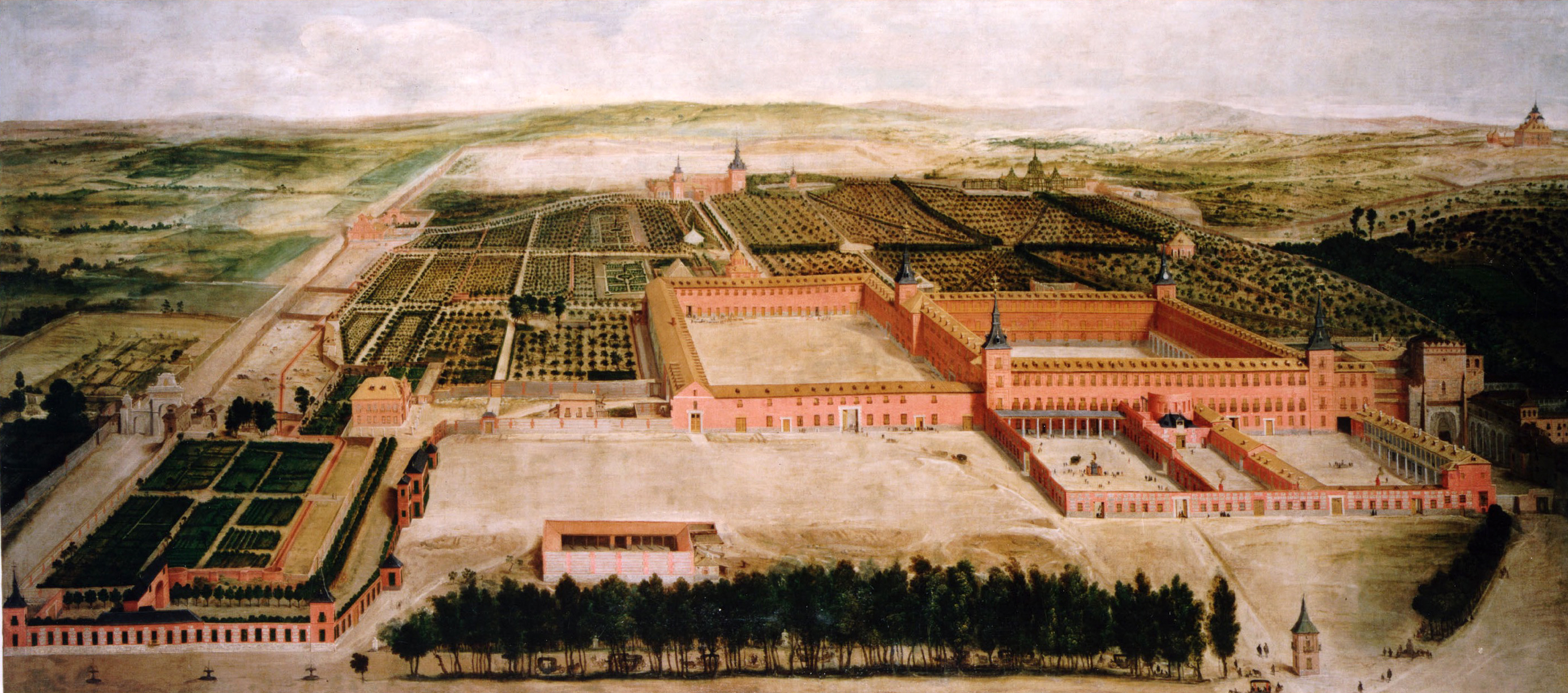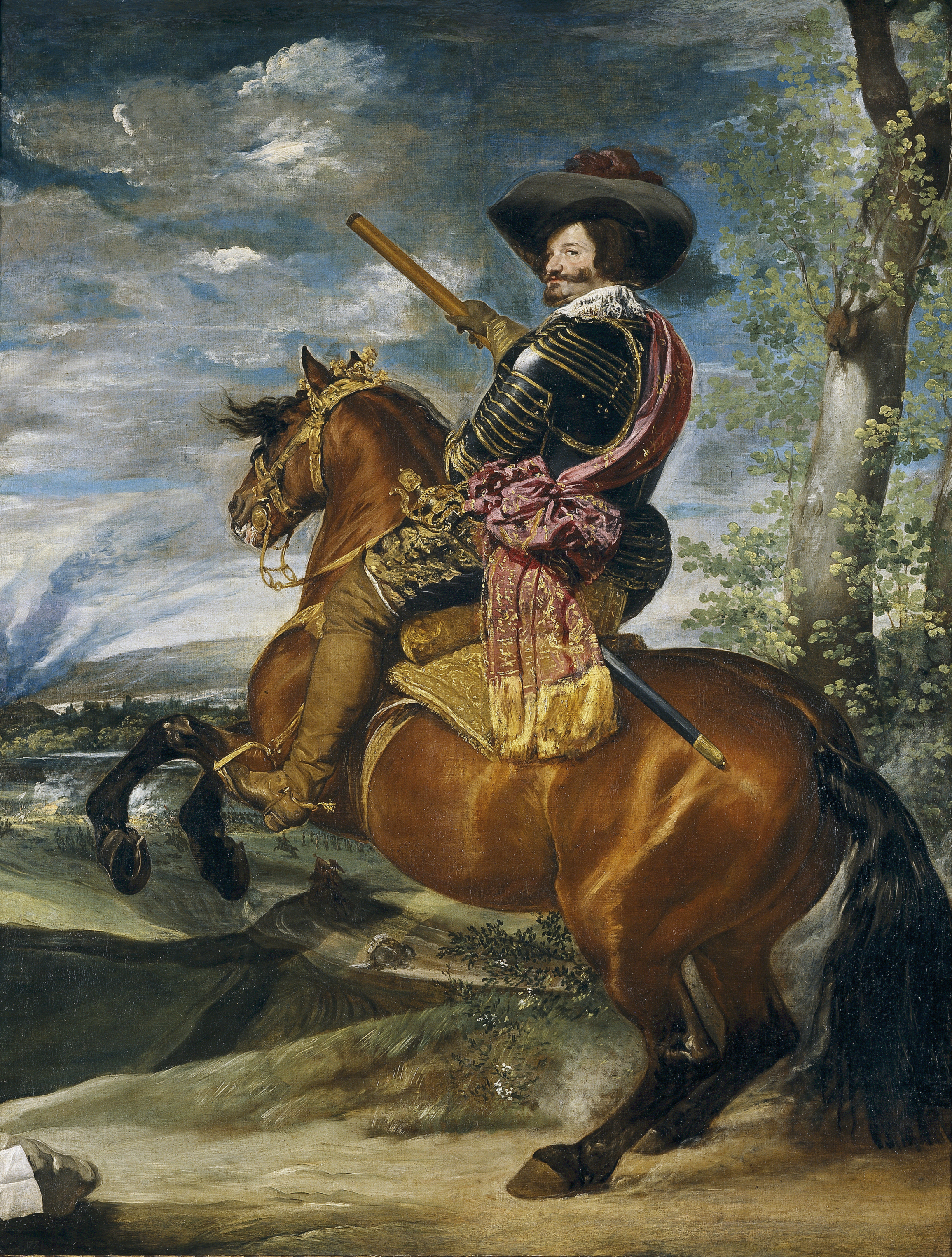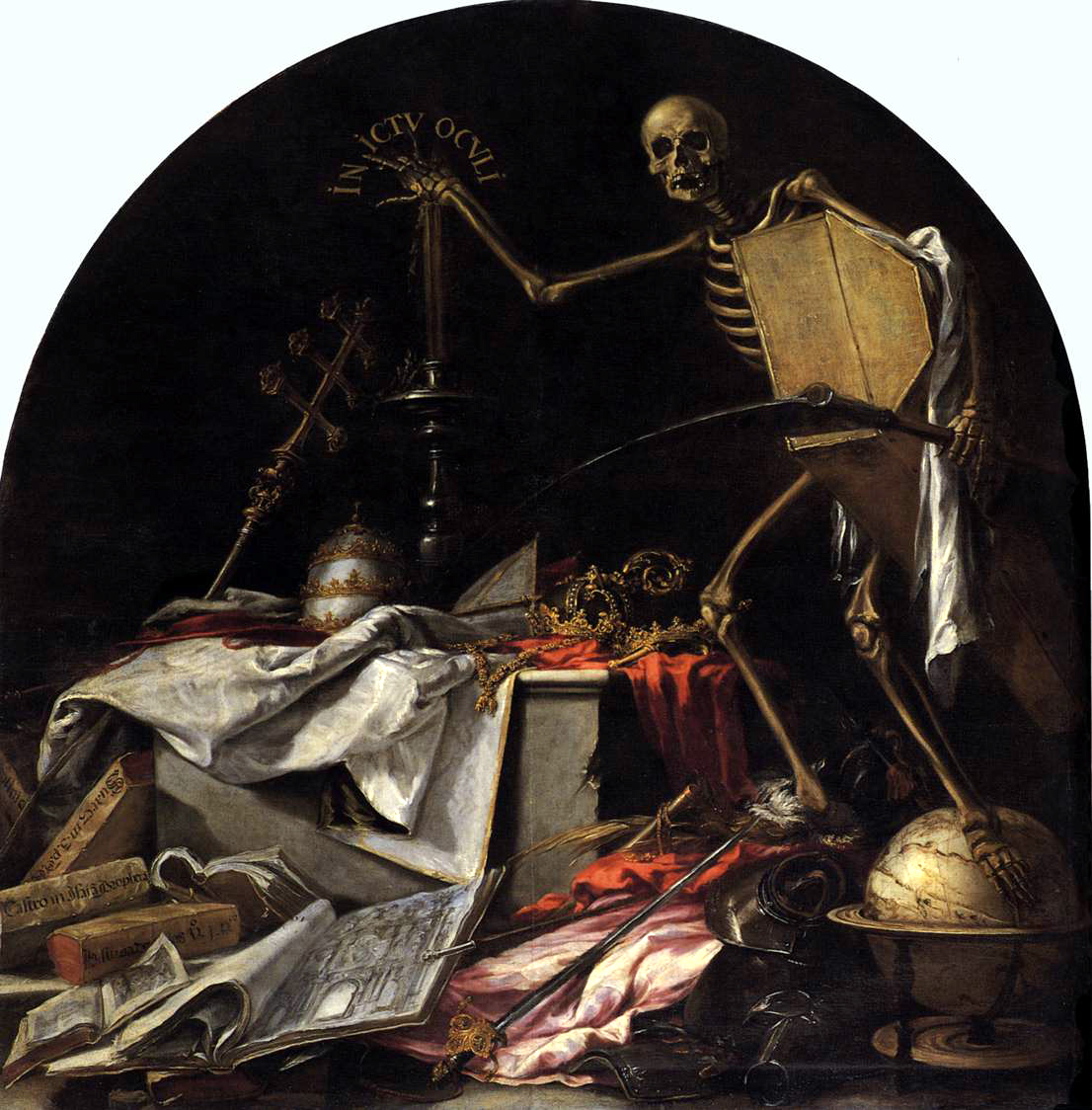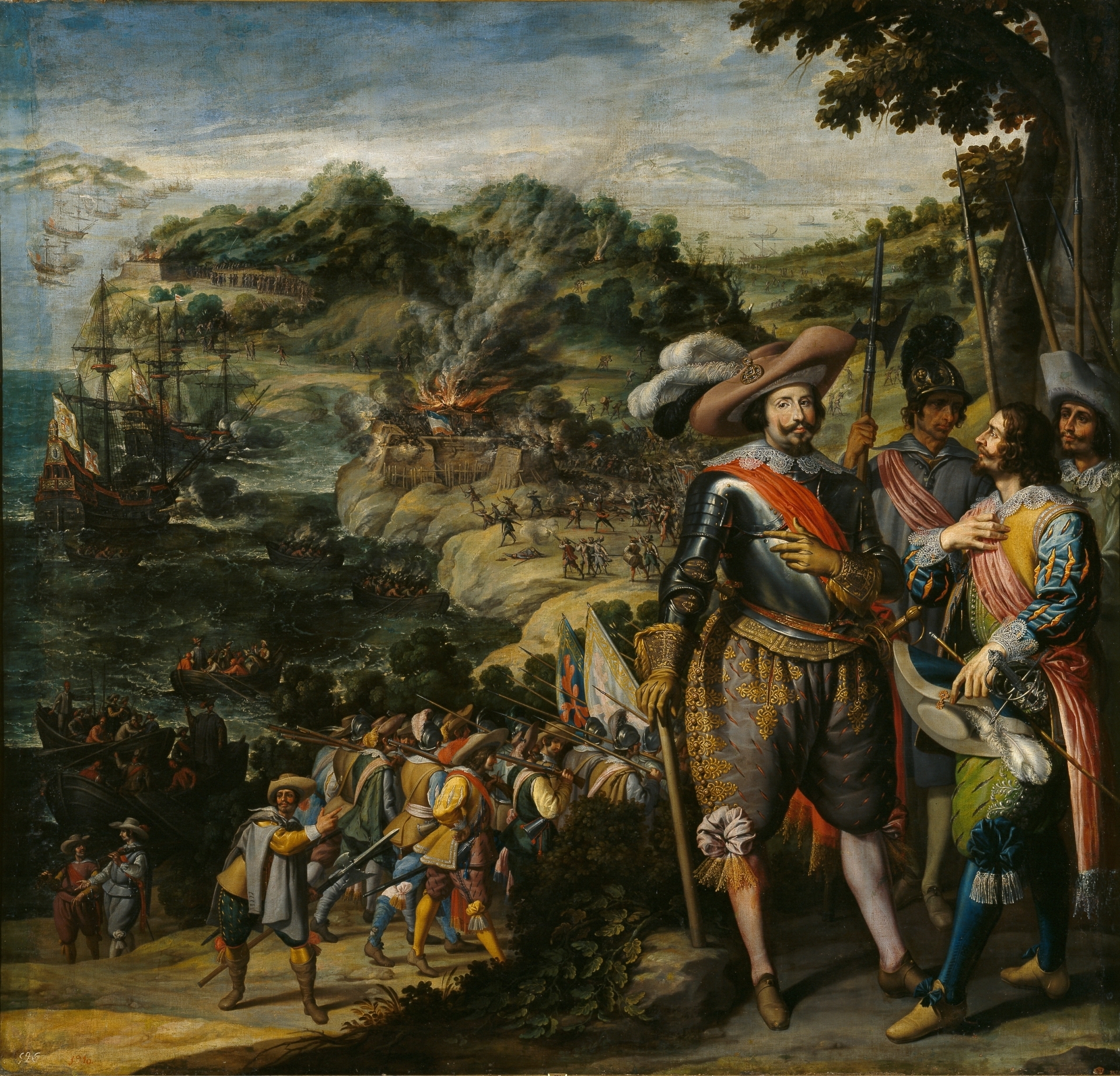|
Buen Retiro Park
The Retiro Park (Spanish: , literally "Good Retreat Park"), also known as Buen Retiro Park or simply El Retiro, is one of the largest Urban park, city parks in Madrid, Spain. The park belonged to the Spanish monarchy until 1868, when it became a public park following the Glorious Revolution (Spain), Glorious Revolution. The park is located at the edge of the city centre, near both the Puerta de Alcalá and the Museo del Prado, and covers . It has gardens, monuments, galleries, an artificial lake, and event-hosting venues. In 2021, Buen Retiro Park became part of a combined UNESCO World Heritage Site that also includes Paseo del Prado. History In 1505, the Hieronymites, Jeronimites monastery was moved to a new Isabelline (architectural style), Isabelline Gothic-style building at the present-day site of the Church of Saint Jerome the Royal. The royal family had a retreat built as part of the new church. Philip II of Spain, King Philip II (ruled 1556–1598) moved the Spanish cour ... [...More Info...] [...Related Items...] OR: [Wikipedia] [Google] [Baidu] |
Madrid
Madrid ( ; ) is the capital and List of largest cities in Spain, most populous municipality of Spain. It has almost 3.5 million inhabitants and a Madrid metropolitan area, metropolitan area population of approximately 7 million. It is the Largest cities of the European Union by population within city limits, second-largest city in the European Union (EU), and its wikt:monocentric, monocentric Madrid metropolitan area, metropolitan area is the List of metropolitan areas in Europe by population, second-largest in the EU.United Nations Department of Economic and Social AffairWorld Urbanization Prospects (2007 revision), (United Nations, 2008), Table A.12. Data for 2007. The municipality covers geographical area. Madrid lies on the Manzanares (river), River Manzanares in the central part of the Iberian Peninsula at about above mean sea level. The capital city of both Spain and the surrounding Community of Madrid, autonomous community of Madrid (since 1983), it is also th ... [...More Info...] [...Related Items...] OR: [Wikipedia] [Google] [Baidu] |
Gaspar De Guzmán, Count-Duke Of Olivares
Gaspar de Guzmán y Pimentel, 1st Duke of Sanlúcar, 3rd Count of Olivares, , known as the Count-Duke of Olivares (taken by joining both Count of Olivares, his countship and Duke of Sanlúcar la Mayor, subsequent dukedom) (6 January 1587 – 22 July 1645), was a Spanish royal favourite () of Philip IV of Spain, Philip IV and minister. He was appointed as Grandee on 10 April 1621. A day after the ending of the Twelve Years' Truce in January 1643, he over-exerted Spain in foreign affairs and unsuccessfully attempted domestic reform. His policy of committing Habsburg Spain, Spain to recapture Dutch Republic, Holland led to a renewal of the Eighty Years' War while Spain was also embroiled in the Thirty Years' War (1618–1648). In addition, his attempts to centralise power and increase wartime taxation led to revolts Reapers' War, in Catalonia and Portuguese Restoration War, in Portugal, which brought about his downfall. Rise to power Olivares was born in Rome in 1587, where his ... [...More Info...] [...Related Items...] OR: [Wikipedia] [Google] [Baidu] |
Philip V Of Spain
Philip V (; 19 December 1683 – 9 July 1746) was List of Spanish monarchs, King of Spain from 1 November 1700 to 14 January 1724 and again from 6 September 1724 to his death in 1746. His total reign (45 years and 16 days) is the longest in the history of the Spanish monarchy, surpassing Philip IV of Spain, Philip IV. Although his ascent to the throne precipitated the War of the Spanish Succession, Philip V instigated many important reforms in Spain, most especially the centralization of power of the monarchy and the suppression of regional privileges, via the Nueva Planta decrees, and restructuring of the administration of the Spanish Empire on the Iberian Peninsula and its overseas regions. Philip was born into the House of Bourbon, French royal family (as Philippe, Duke of Anjou) during the reign of his grandfather Louis XIV. He was the second son of Louis, Grand Dauphin, and was third in line to the French throne after his father and his elder brother, Louis, Duke of Burgund ... [...More Info...] [...Related Items...] OR: [Wikipedia] [Google] [Baidu] |
Parque Del Retiro En Madrid, Monumento A Alfonso XIII - Panoramio
*
*
{{dab, surname ...
Parque is the Galician, Portuguese and Spanish word for "park", and may refer to: * Parque (TransMilenio), a metro station in Bogotá, Colombia * Parque (Lisbon Metro), in Portugal * Parque (Santurce), a subbarrio in San Juan, Puerto Rico * Battle of Parque (1912), in Morelos, Mexico * Jim Parque (born 1975), American baseball player See also * Parquetry, a type of flooring * Park (other) A park is an area of land with a recreational or other specific purpose. Park or Parks may also refer to: Places United Kingdom * Park (Barnet ward), London, England * Park (Greenwich ward), London, England * Park (Haringey ward), London, Eng ... [...More Info...] [...Related Items...] OR: [Wikipedia] [Google] [Baidu] |
Paseo De La Argentina (Retiro, Madrid) 02
Paseo may refer to: * a ''paseo'', a promenade, esplanade or public avenue. * ''Paseo'', a euphemism for a ride to summary execution during the White Terror during the Spanish Civil War Parkways and malls * The Paseo (Kansas City, Missouri), a parkway in Kansas City, Missouri, U.S. * The Paseo (Pasadena), an outdoor mall in Pasadena, California, U.S. * Paseo Arts District, a commercial shopping district in Oklahoma City, U.S. * Paseo de la Reforma, wide avenue that runs diagonally across the heart of Mexico City * Paseo de Roxas, prime commercial artery in the Makati Central Business District of Metro Manila Entertainment * ''Paseo'' (film), a 2018 Canadian short film * "Paseo", a song by Paradisio from ''Paradisio'' Other * Toyota Paseo, a subcompact car * Paseo (restaurant), a restaurant in Seattle, Washington See also * * El Paseo (other) El Paseo may refer to: * El Paseo (Palm Desert, California), city * El Paseo (Santa Barbara, California), complex of historic b ... [...More Info...] [...Related Items...] OR: [Wikipedia] [Google] [Baidu] |
Charles II Of Spain
Charles II (6 November 1661 – 1 November 1700) was King of Spain from 1665 to 1700. The last monarch from the House of Habsburg, which had ruled Spain since 1516, he died without an heir, leading to a European Great Power conflict over the succession. For reasons still debated, Charles experienced lengthy periods of ill health throughout his life. This made the question of who would succeed him central to European diplomacy for much of his reign, one historian writing that "from the day of his birth, they were waiting for his death". The two main candidates were the Austrian Habsburg Archduke Charles, and 16-year-old Philip of Anjou, grandson of Charles' half-sister Maria Theresa and Louis XIV of France. Shortly before his death in November 1700, Charles named Philip his heir, but the acquisition of an undivided Spanish Empire by either France or Austria threatened the European balance of power. Failure to resolve these issues through diplomacy resulted in the 1701 to ... [...More Info...] [...Related Items...] OR: [Wikipedia] [Google] [Baidu] |
Philip IV Of Spain
Philip IV (, ; 8 April 160517 September 1665), also called the Planet King (Spanish: ''Rey Planeta''), was King of Spain from 1621 to his death and (as Philip III) King of Portugal from 1621 to 1640. Philip is remembered for his patronage of the arts, including such artists as Diego Velázquez, and his rule over Habsburg Spain, Spain during the Thirty Years' War. By the time of his death, the Spanish Empire had reached approximately 12.2 million square kilometres (4.7 million square miles) in area but in other aspects was in Decline of Spain, decline, a process to which Philip contributed with his inability to achieve successful domestic and military reform. He was succeeded on his death by his young son Charles II of Spain, Charles II as King of Spain and in 1640 (with the collapse of the Iberian Union) by John IV of Portugal, John IV as King of Portugal. Personal life Philip IV was born in the Royal Palace of Valladolid, and was the eldest son of Philip III of Spai ... [...More Info...] [...Related Items...] OR: [Wikipedia] [Google] [Baidu] |
Spanish Golden Age
The Spanish Golden Age (Spanish language, Spanish: ''Siglo de Oro'', , "Golden Century"; 1492 – 1681) was a period of literature and the The arts, arts in Spain that coincided with the political rise of the Spanish Empire under the Catholic Monarchs of Spain, and the Habsburg Spain, Spanish Habsburgs. The Spanish Golden Age is broadly associated with the reigns of Isabella I of Castile, Isabella I, Ferdinand II of Aragon, Ferdinand II, Charles V, Holy Roman Emperor, Charles V, Philip II of Spain, Philip II, Philip III of Spain, Philip III, and Philip IV of Spain, Philip IV, when Spain was at the peak of its power and influence in Europe and the world. Overview The Spanish Golden Age began after the union of King Ferdinand II of Aragon and Queen Isabella I of Castile, which brought stability following years of conflict. After the conquest of Al-Andalus (Islam in Spain, Muslim Spain) and the Expulsion of Jews from Spain, expulsion of the Jews, the various Christian kingdoms ... [...More Info...] [...Related Items...] OR: [Wikipedia] [Google] [Baidu] |
House Of Habsburg
The House of Habsburg (; ), also known as the House of Austria, was one of the most powerful Dynasty, dynasties in the history of Europe and Western civilization. They were best known for their inbreeding and for ruling vast realms throughout Europe during the Middle Ages and early modern period, including the Holy Roman Empire and Habsburg Spain, Spain. The house takes its name from Habsburg Castle, a fortress built in the 1020s in present-day Switzerland by Radbot of Klettgau, who named his fortress Habsburg. His grandson Otto II, Count of Habsburg, Otto II was the first to take the fortress name as his own, adding "Count of Habsburg" to his title. In 1273, Count Radbot's seventh-generation descendant, Rudolph I of Germany, Rudolph, was elected King of the Romans. Taking advantage of the extinction of the Babenbergs and of his victory over Ottokar II of Bohemia at the Battle on the Marchfeld in 1278, he appointed his sons as Dukes of Austria and moved the family's power base ... [...More Info...] [...Related Items...] OR: [Wikipedia] [Google] [Baidu] |
Boboli Gardens
The Boboli Gardens ( /’bo.bo.li/) is a historical park of the city of Florence that was opened to the public in 1766. Originally designed for the Medici, it represents one of the first and most important examples of the Italian garden, which later served as inspiration for many European courts. Statues of various styles and periods, ancient and Renaissance, dot the garden. It also has large fountains and artificial caves, notably a grotto built by the artist, architect, and sculptor Bernardo Buontalenti between 1536 and 1608. History and layout The Gardens, directly behind the Pitti Palace, the main seat of the Medici grand dukes of Tuscany at Florence, are some of the first and most familiar formal 16th-century Italian gardens. The mid-16th-century garden style, as it was developed here, incorporated longer axial developments, wide gravel avenues, a considerable "built" element of stone, the lavish employment of statuary and fountains, and a proliferation of detail, coordi ... [...More Info...] [...Related Items...] OR: [Wikipedia] [Google] [Baidu] |
Cosimo Lotti
Cosimo Lotti (1571–1643) was an Italian engineer, scenographer, and landscape designer. He worked around Florence until in his mid-fifties he moved to Madrid where he produced theatrical spectacles for the royal court. Lotti was born in Florence in 1571 and first became a pupil of Bernardino Poccetti. He then worked with Bernardo Buontalenti on the lay out of the Boboli Gardens and went on to install water features in other gardens. His paintings included a ''Birth of Mary'' for the church of San Giorgio a Castelnuovo in Prato. In 1626 he left Florence for Spain, at the request of the Count Duke of Olivares, to join the court of Philip IV as an engineer. As well as redesigning royal gardens in the Italianate style, particularly involving spectacular fountains, he impressed the King with his cleverly engineered theatrical special effects. This included an extravagant staging of a musical piece in the Italian style with poetry by Lope de Vega Félix Lope de Vega y Car ... [...More Info...] [...Related Items...] OR: [Wikipedia] [Google] [Baidu] |
Hall Of Realms
The ''Salón de Reinos'' (translated as "Hall of the Kingdoms" or "Hall of Realms") or ''salón grande'' ("great hall") is a 17th-century building in Madrid, originally a wing of the Buen Retiro Palace. The Salón de Reinos and the Casón del Buen Retiro are the only survivors of the original grand scheme of the palace. Built between 1630 and 1635, the Hall of Realms housed the largest paintings in the royal collection, now all in the Museo del Prado. It is named after its paintings of the coats of arms of the 24 kingdoms which formed the Kingdom of Spain at the time of Philip IV of Spain. The building served as the ''Museo del Ejército'' from 1841 to 2010 when the military collections were put on display at the Alcázar of Toledo. The Prado Museum acquired the vacant building to display part of its collections and made its renovation the subject of an architectural competition. The brief was to redesign the space as part of the campus of the art museum for its 200th ann ... [...More Info...] [...Related Items...] OR: [Wikipedia] [Google] [Baidu] |







